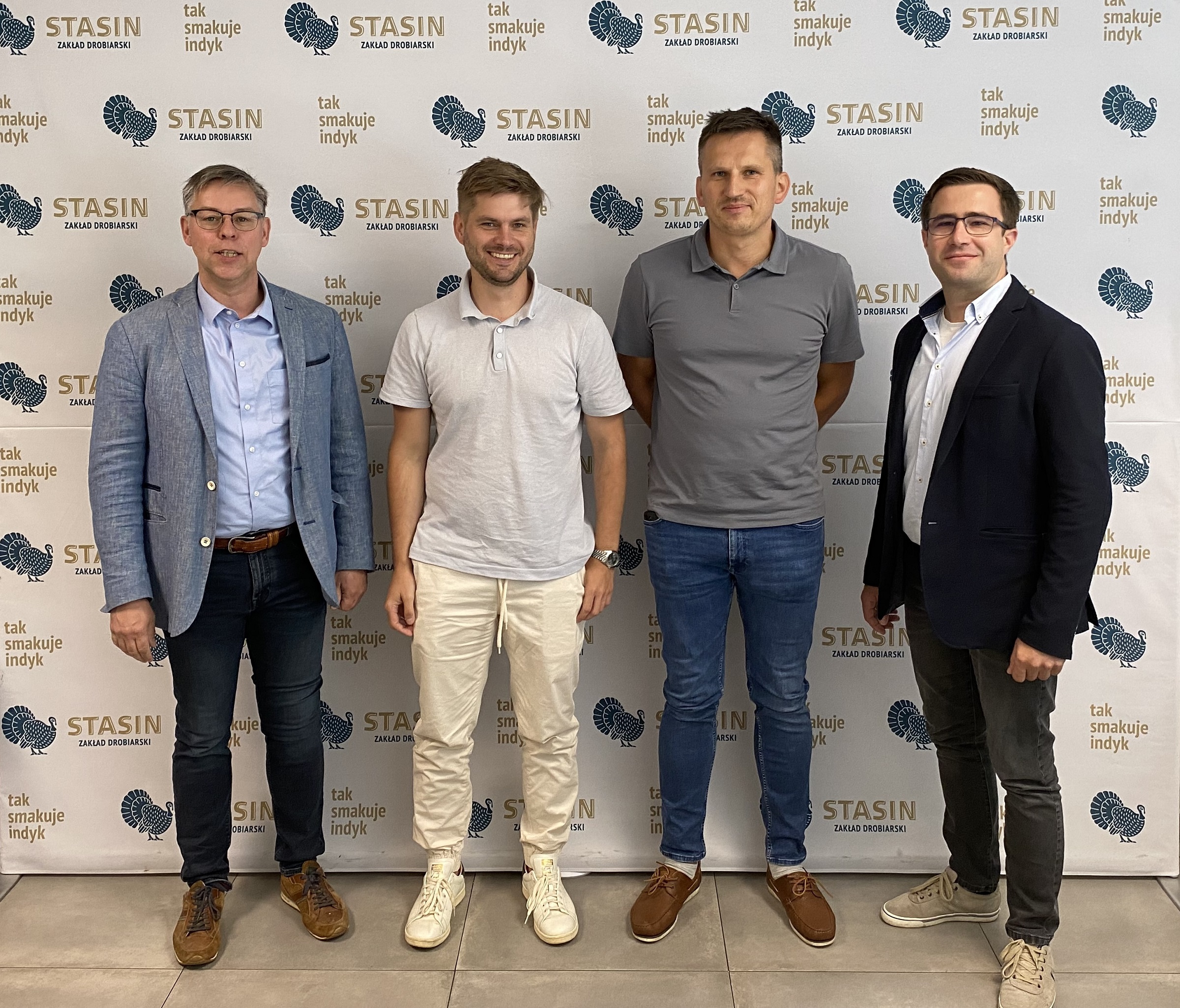Are you processing male or female turkeys?
“We process male and female turkeys. Farmers in our region usually breed female turkeys, as the Polish retail market prefers female turkey meat due to its smaller size, making it more convenient for customers. For Christmas and Easter, all supermarkets sell ‘baby turkeys’. These seasonal hen birds are even smaller than regular ones and require some machines to be by-passed. Marel designed our line to be adaptable to seasonal products, allowing us to process turkeys ranging from 5 to 22 kilos[11-49 lbs].” The Marel solutions in the evisceration line include a VC-10T vent cutter, an Opening Machine, the P-12T eviscerator, TP-T three-point suspension, an inspection station, the MS-90T intestine separator, TP-T head cutter, NIC-12T neck skin inspection machine, FIM-10T final inspection machine and the RW-10T inside/outside washer.
How popular is turkey meat in Poland?
“In general, demand for turkey meat is increasing. Supermarkets started promoting turkey in the late 2000s. Before that, turkey meat was not so popular. The local market in Poland is growing, because we are becoming a rich country. We are already wealthier than Greece or Portugal; people are switching from cheaper to more expensive foods. One of the biggest differences between Poland and Western Europe is a taste for giblets. We don’t process gizzards, hearts and livers for pet food but we sell everything for human consumption. The turkey neck is highly prized in Poland. Neck cutting is still manual, the only manual process in the evisceration line, because we can get better yields. We sell necks to supermarkets at good prices. Polish consumers use turkey wings and necks to make a soup stock, a Polish specialty. We are also seeing pork increasingly replaced by turkey meat in Wiener schnitzels. The most popular turkey meat is minced meat. Consumers mix pork mince with turkey mince, the fastest growing article in Poland. That’s why we will be starting the production of minced meat, schnitzels, cubes and possibly marinated products. We also produce turkey cold cuts, sausages and smoked products. For the Universal Studios theme park in Japan, we produce smoked turkey drumsticks, sold as ‘dinosaur legs’.”




